Table of Contents
Fiction: Middle-Grade and Older Readers
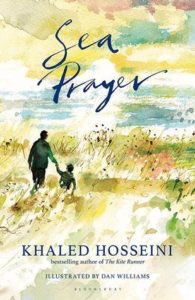 |
Khaled Hosseini’s Sea Prayer (Riverhead Books, 2018), illustrated with watercolors, is written in the form of a letter from a father to his young son as they wait for the boat that will help them escape the deadly war in Syria. Touching and powerful. It’s a short read (48 pages). Appropriate for a wide range of ages. |
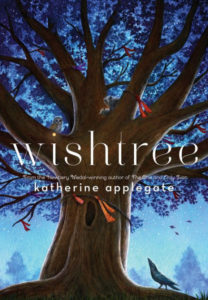 |
Katherine Applegate’s Wishtree (Feiwel & Friends, 2017) – one of the very few books narrated by a tree – is the story of Red, a neighborhood oak, home to a personality-laden crow named Bongo and many other animals. Red is also traditionally a wishtree: on the first of May, people tie rags and tags to her branches with wishes written on them. Trouble arises, however, when a Muslim family moves to the neighborhood – which leads one angry boy to carve LEAVE on Red’s bark with a screwdriver. A wonderful and hopeful read for ages 8-12. |
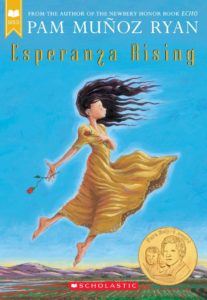 |
In Pam Munoz Ryan’s Esperanza Rising (Scholastic, 2016), Esperanza, raised on the family’s ranch in Mexico in a luxurious house filled with servants, ends up fleeing to California, where she and her mother live in a farm labor camp – and Esperanza must cope with hard work, prejudice, and the financial struggles of the Great Depression. For ages 8-12. |
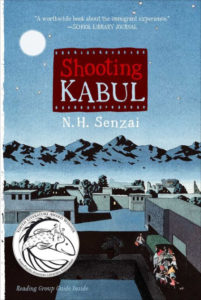 |
N.H. Senzai’s Shooting Kabul (Paula Wiseman Books, 2011) is the story of 11-year-old Fadi, whose family has decided to illegally flee Afghanistan for the United States. In the chaos that takes place at the underground transport rendezvous, and with the Taliban closing in, Fadi loses his little sister Miriam in the crowd, and she is left behind. Fadi has to deal with the difficulty of adjusting to life in California in the wake of the 9/11 attack and with guilt over Miriam’s loss and the hope of finding her again. (The “shooting” of the title, incidentally, refers not to guns, but to photography.) For ages 8-12. |
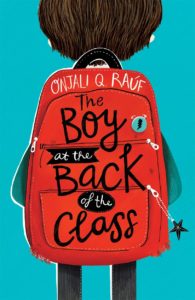 |
In Onjali Q. Rauf’s The Boy at the Back of the Class (Yearling, 2020), set in London, the new boy in class is nine-year-old Ahmet, a Syrian refugee. When four of his classmates learn that he’s separated from his family and a deadline for reunion is fast approaching, they come up with a plan to help – which involves roping in the Queen herself. For ages 8-12. |
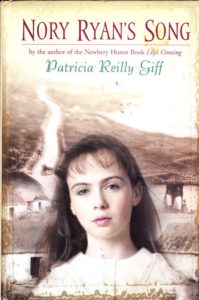 |
By Patricia Reilly Giff, in Nory Ryan’s Song (Yearling, 2002), Nory’s family has lived on Maidin Bay on the west coast of Ireland for generations – but now blight has attacked the potatoes, the English landlord is raising the rent, and the Ryans face starvation. So 12-year-old Nora is being sent to America. The sequel Maggie’s Door deals with the voyage across the Atlantic and arrival in New York. For ages 8-12. |
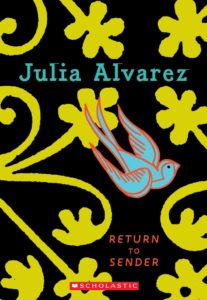 |
By Julia Alvarez, in Return to Sender (Yearling, 2019), set in Vermont, Tyler’s father has been injured in a tractor accident, so they’ve hired a a trio of related Mexican migrant workers to help their farm survive. The workers are undocumented, and one of them has three daughters of whom the oldest, Mari, becomes Tyler’s close friend. The girls are separated from their mother, who has been unable to enter the United States, and all live in fear of deportation. The story is told in two voices, Tyler’s and Mari’s. For ages 8-12. |
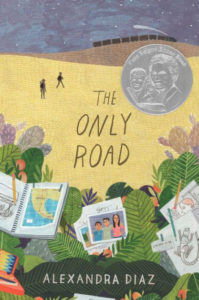 |
By Alexandra Diaz, The Only Road (Simon & Schuster, 2017) is the story of 12-year-old Jaime whose cousin and best friend has just been killed by a drug trafficking gang in his small hometown in Guatemala. Knowing that he might be next, Jaime and his cousin Angela embark on the treacherous journey from Guatemala to New Mexico, where Jaime’s older brother lives. For ages 8-12. |
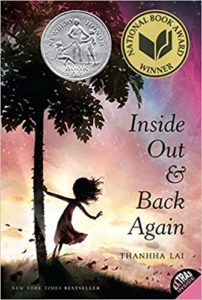 |
Thanhha Lai’s Inside Out and Back Again (HarperCollins, 2011) – a National Book Award winner – is the story in verse of 10-year old Ha, who flees Vietnam with her mother and older brothers, eventually ending up in Alabama. There she suffers from rejection and bullying – but is supported by an understanding teacher who lost a son in the Vietnam War. For ages 8-13.
|
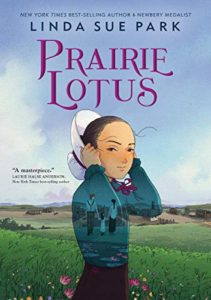 |
In Linda Sue Park’s Prairie Lotus (Clarion, 2020), Hanna, who is half-Asian, struggles to fit in in the 1880s in a small town in the Dakota Territory, which harbors prejudice against Asians. A wonderful and empowering read for ages 9-12.
|
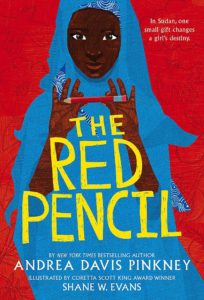 |
Andrea David Pinkney’s The Red Pencil (Little, Brown, 2015), written in free verse and set in the South Darfur region of Sudan, is the story of 12-year-old Amira who is forced to flee to a refugee camp when militants attack her rural village. There she is helped to heal through art, after a teacher gives her a red pencil. For ages 9 and up. |
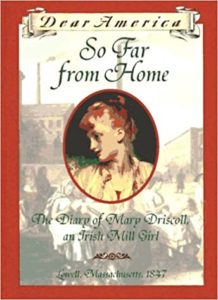 |
In the Dear America series, Barry Denenberg’s So Far From Home: The Diary of Mary Driscoll, An Irish Mill Girl (Scholastic, 1997) begins in Skibbereen, County Cork, Ireland, in 1847. The potato famine has struck Ireland and young Mary is sent to America. For ages 9-12.
|
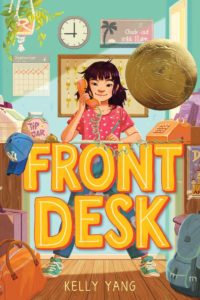 |
In Kelly Yang’s Front Desk (Arthur A. Levine, 2019), 10-year-old Mia and her parents, immigrants from China, live and work in a motel, where they protect immigrants in difficult situations by giving them shelter. If discovered by grasping owner Mr. Yao, however, they’ll lose both home and jobs. The book deals with such issues as poverty, racism, fraud, and bullying – but sends many positive messages about standing up for what is right and respecting others. For ages 9-12. |
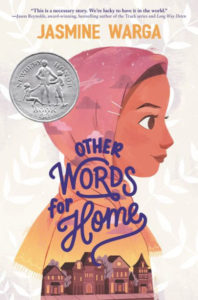 |
In Jasmine Warga’s Other Words for Home (Balzer + Bray, 2019), a novel in verse, Jude and her pregnant mother have left war-torn Syria, leaving Jude’s father and older brother behind, to live with Uncle Mazin, his American wife Michelle, and their unwelcoming daughter Sarah in Cincinnati. Jude struggles with a new culture, a new language, worry about her brother who has joined the revolutionaries, and anti-Muslim prejudice. Many starred reviews. For ages 9-14. |
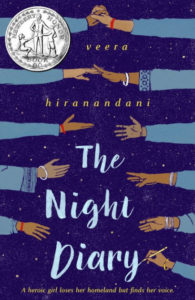 |
Veera Hirandani’s The Night Diary (Kokila, 2018) is set in India in 1947, just as the country becomes independent from Great Britain and splits into India and Pakistan. Twelve-year-old Nisha comes from a mixed-faith family: her mother, who died in childbirth, was Muslim, but the bulk of the family is Hindu. With the bloody riots that accompany partition, Nisha’s family is forced to flee their home – leaving behind Kazi, their Muslim cook, and one of Nisha’s staunchest friends – and cross the brand-new border. For ages 11 and up. |
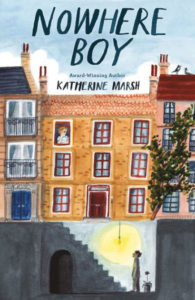 |
In Katherine Marsh’s Nowhere Boy (Roaring Brook Press, 2018), Ahmed is a 14-year-old Syrian refugee who lost his father in the flight by sea after the bombing of their home in Aleppo. Robbed and abandoned in Brussels, he finds shelter in the basement of the home of visiting Americans. There he hides until discovered by Max, the son of the family, who also feels isolated and out of place. The boys form a bond. This is a wonderful story of friendship, family, and a realization of the importance of things we take for granted. A lot to discuss here. For ages 10-14. |
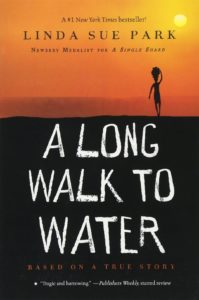 |
Linda Sue Park’s A Long Walk to Water (Houghton Mifflin Harcourt, 2011) tells the intertwined stories of Nya, living in South Sudan in 2008, who must walk hours each day to fetch water from the nearest pond; and Salva, in 1985, separated from his family during a civil war and struggling to find them again. He ends up leading a caravan of over a thousand similarly lost boys to a refugee camp, and eventually he emigrates to America, finds his father, and starts a volunteer group for building wells in South Sudan. Which is where Salva meets Nya. For ages 10 and up. |
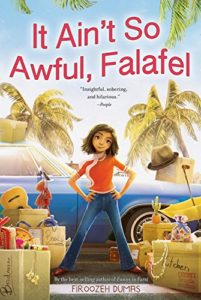 |
Firoozeh Dumas’s It Ain’t So Awful, Falafel (Clarion, 2017) is the story of Zomorod (now to be known as Cindy), growing up in California in the 1970s, where life is difficult for her Iranian family in light of Iran’s taking of American hostages. Funny and poignant for ages 10 and up.
|
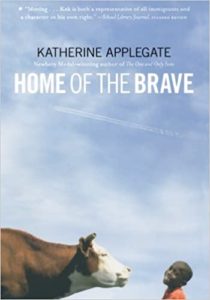 |
Katherine Applegate’s Home of the Brave (Square Fish, 2008) is the story of Kek who lost his family in the war in Sudan and survived African refugee camps before finding asylum in Minnesota. There he encounters much that is new and unfamiliar (snow, washing machines), and some that he knows (cows) – while still hoping to be reunited with his mother. For ages 10 and up. |
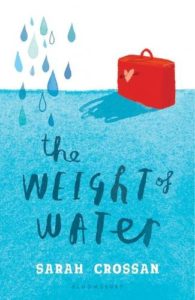 |
Sarah Crossan’s novel in verse, The Weight of Water (Bloomsbury, 2013), is the story of 12-year-old Kasienka who has emigrated from Poland to England with her mother in hopes of finding her father. Kasienka, ostracized and bullied at school, only feels strong while swimming – which is where she connects with William, one of her classmates. For ages 10-14. |
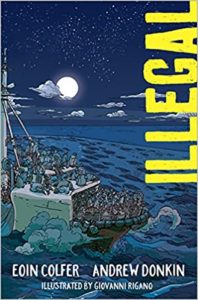 |
Eoin Colfer’s graphic novel Illegal (Sourcebooks Young Readers, 2018) is the story of a young Ghanaian orphan, Ebo, who follows his older brother, Kwame, on a perilous journey seeking asylum in Europe. Well-researched and gripping. For ages 10-15.
|
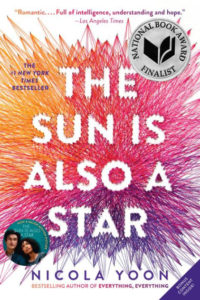 |
Nicola Yoon’s The Sun is Also a Star (Ember, 2019) is the story of Natasha, whose immigrant family is within hours of being deported to Jamaica, and Korean-American Daniel, who is preparing to interview for Dartmouth College. It turns out that Natasha’s immigration lawyer is Daniel’s interviewer. A philosophical and romantic coming-of-age story for ages 13 and up. The movie version of the story (2019) is rated PG-13. |
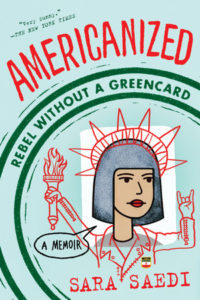 |
In Sara Saedi’s Americanized (Ember, 2019), Sara at the age of 13 discovers that she’s an illegal immigrant, brought to the United Stated from Iran by her parents at the age of two. Saedi’s memoir segues between the trials of being a teenager and fear of deportation and the struggle to get a green card. A funny and poignant coming-of-age book for ages 14 and up. Read an NPR interview with Saedi here. |
